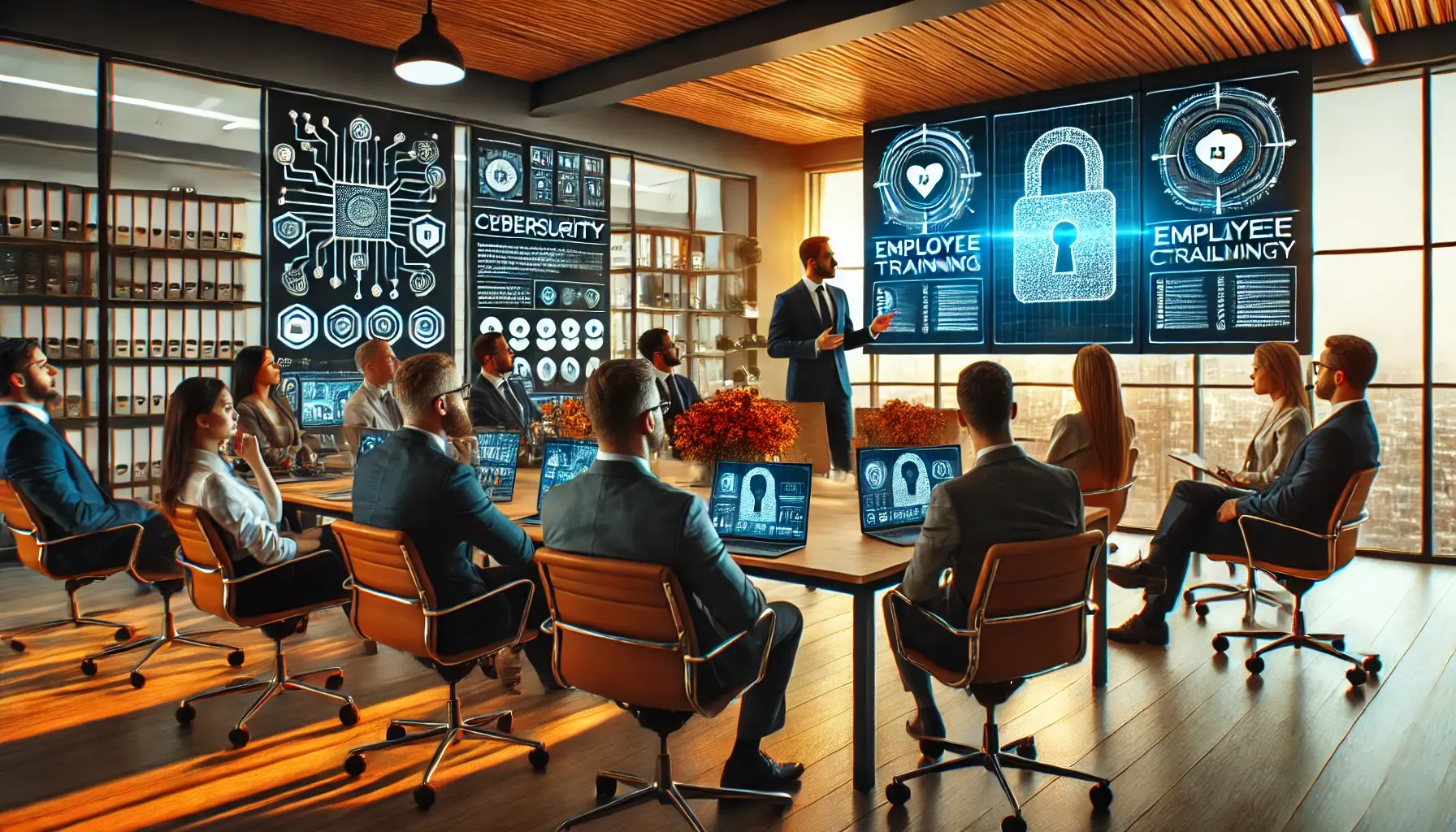3 min read
Defending Digital Assets: Enhancing Cybersecurity Programs
Cybersecurity Programs: Safeguarding the Digital WorldIn today's interconnected world, where technology proliferates every aspect of our lives, the...
4 min read
 The Amazing Team at Force One
:
Apr 29, 2024 11:55:31 AM
The Amazing Team at Force One
:
Apr 29, 2024 11:55:31 AM
In today's digital age, cybersecurity plays a crucial role in safeguarding sensitive information and protecting against cyber threats. Explore the world of cybersecurity with this informative blog post.
Understanding cybersecurity is essential in today's interconnected world. It refers to the practice of protecting computers, servers, networks, and data from digital attacks or unauthorized access. It involves implementing various measures to prevent, detect, and respond to cyber threats.
Cybersecurity encompasses a wide range of technologies, processes, and practices that work together to ensure the security of digital systems. It includes aspects such as network security, application security, information security, and disaster recovery planning.
By understanding cybersecurity, individuals and organizations can better protect themselves from cybercriminals who aim to steal sensitive information, disrupt operations, or cause other forms of harm.
Cybersecurity consists of several key components that work together to provide comprehensive protection against cyber threats. These components include:
- Network Security: This involves securing computer networks and their infrastructure to prevent unauthorized access, data breaches, and other malicious activities. It includes measures such as firewalls, intrusion detection systems, and virtual private networks (VPNs).
- Application Security: This focuses on securing software applications and systems to prevent vulnerabilities that can be exploited by hackers. It involves practices like secure coding, regular updates and patches, and robust authentication mechanisms.
- Information Security: This involves protecting sensitive information from unauthorized access, disclosure, alteration, or destruction. It includes measures such as encryption, access controls, and data backup and recovery plans.
- Incident Response: This component deals with the identification, containment, and recovery from cybersecurity incidents. It involves having a well-defined incident response plan, conducting regular drills and simulations, and maintaining a skilled incident response team.
- Security Awareness and Training: This component focuses on educating individuals about cybersecurity best practices and raising awareness about potential threats. It includes training programs, awareness campaigns, and ongoing education to keep up with evolving threats.
By understanding and implementing these key components of cybersecurity, individuals and organizations can establish a strong defense against cyber threats.
Cybersecurity Microcredentials - ForceOne Cybersecurity
Cybersecurity Governance Risk and Compliance Course
Cyber Incident Response | Cybersecurity Bootcamp by ForceOne Cybersecurity
Cybersecurity certification in Medical Devices and network Security Apps
Cloud Cybersecurity – Cloud Risks
Cybersecurity Supply Chain Risk Management and Compliance Course in USA
Cyber & Energy Network Defense Certificate - ForceOne Cybersecurity
The world of cybersecurity is constantly evolving, and new threats emerge every day. Some of the most common cyber threats include:
- Malware: Malicious software, such as viruses, worms, and ransomware, that are designed to disrupt, damage, or gain unauthorized access to computer systems.
- Phishing: A social engineering attack where attackers impersonate legitimate entities to trick individuals into revealing sensitive information, such as passwords or credit card details.
- Denial of Service (DoS) Attacks: These attacks aim to overwhelm a computer system or network with excessive traffic, rendering it unable to function properly.
- Data Breaches: The unauthorized access, acquisition, or disclosure of sensitive information, such as personal data or trade secrets.
- Insider Threats: Threats that arise from within an organization, such as employees intentionally or unintentionally compromising security.
- Advanced Persistent Threats (APTs): Sophisticated attacks where attackers gain unauthorized access to a network and remain undetected for an extended period, often targeting specific organizations or individuals.
Cybersecurity Degrees VS. Bootcamp Certificates
These are just a few examples of the many cyber threats that individuals and organizations face. Understanding these threats is crucial in implementing effective cybersecurity measures.
The importance of cybersecurity cannot be overstated in today's digital landscape. Here are some key reasons why cybersecurity is essential:
- Protection of Sensitive Information: Cybersecurity measures help protect sensitive information, such as personal data, financial records, and intellectual property, from falling into the wrong hands.
- Prevention of Financial Loss: Cyberattacks can result in significant financial losses for individuals and organizations. By implementing strong cybersecurity measures, the risk of financial loss can be minimized.
- Safeguarding Reputation: A cybersecurity breach can damage an individual's or organization's reputation. By maintaining robust cybersecurity practices, trust and confidence can be maintained with customers, partners, and stakeholders.
- Compliance with Regulations: Many industries and jurisdictions have specific cybersecurity regulations and requirements. Compliance with these regulations is necessary to avoid legal and financial consequences.
- Protection of Critical Infrastructure: Cybersecurity is crucial for protecting critical infrastructure, such as power grids, transportation systems, and healthcare networks, from cyber threats that can have far-reaching impacts.
By recognizing the importance of cybersecurity and investing in the necessary measures, individuals and organizations can mitigate the risks associated with cyber threats and ensure a safer digital environment.
To enhance cybersecurity and protect against cyber threats, it is essential to follow best practices. Here are some recommended practices:
- Use Strong Passwords: Create unique, complex passwords for each online account and use a password manager to securely store them.
- Keep Software Updated: Regularly update operating systems, applications, and antivirus software to patch vulnerabilities and protect against known threats.
- Be Cautious of Phishing Attempts: Exercise caution when clicking on links or opening attachments in emails, especially from unknown or suspicious sources.
- Enable Two-Factor Authentication: Add an extra layer of security to online accounts by enabling two-factor authentication, which requires a second verification step.
- Regularly Back Up Data: Create regular backups of important data to ensure it can be restored in case of data loss or ransomware attacks.
- Educate and Train Employees: Provide cybersecurity awareness and training programs to employees to ensure they understand the importance of cybersecurity and can identify potential threats.
- Implement Firewalls and Antivirus Software: Install firewalls and reliable antivirus software to detect and prevent unauthorized access and malware infections.
By implementing these best practices and staying vigilant, individuals and organizations can significantly enhance their cybersecurity posture.
Also Read: Why Is A Bootcamp In Cybersecurity Helpful To You?
If you're interested in more job tips and ways to advance your career in the cybersecurity field, check out more details at ForceOne Cybersecurity. Together, we can build a safer digital future.
FAQs
What is cybersecurity?
Cybersecurity is the practice of protecting computers, networks, and data from digital attacks, unauthorized access, and other cyber threats.What are the key components of cybersecurity?
Key components include network security, application security, information security, incident response, and security awareness and training.What are some common cyber threats?
Common threats include malware, phishing attacks, denial of service attacks, data breaches, insider threats, and advanced persistent threats.Why is cybersecurity important?
Cybersecurity protects sensitive information, prevents financial loss, safeguards reputation, ensures compliance with regulations, and secures critical infrastructure.What are some best practices for cybersecurity?
Best practices include using strong passwords, updating software regularly, being cautious of phishing, enabling two-factor authentication, regularly backing up data, and implementing firewalls and antivirus software.
3 min read
Cybersecurity Programs: Safeguarding the Digital WorldIn today's interconnected world, where technology proliferates every aspect of our lives, the...

6 min read
In today's digital age, cybersecurity is more crucial than ever for businesses to protect their sensitive data and maintain customer trust. This blog...

6 min read
Cybersecurity Training for Employees: Enhancing Digital Defense in the USAIntroduction:In today's digitally interconnected world, businesses face...